
Rice, Baylor to study how screen use affects young children
Rice engineers and Baylor College of Medicine researchers are studying how screen use affects young children.

Rice, Baylor to study how screen use affects young children
Rice engineers and Baylor College of Medicine researchers are studying how screen use affects young children.

Early planetary migration can explain missing planets
Computer simulations by Rice University scientists and their collaborators explain two puzzling observations of exoplanets orbiting distant stars.
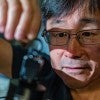
Rice wins Moore Foundation grant for quantum vacuum research
Junichiro Kono’s lab will study how matter and quantum vacuums become entangled thanks to a new grant from the Gordon and Betty Moore Foundation.

Rice’s Luz Garcini named to American Psychological Association’s board of directors
Luz Garcini , an assistant professor of psychological sciences at Rice University, has been named a member at large of the board of directors of the American Psychological Association (APA).

Why some Latino communities fear the COVID-19 vaccine, and what can be done to help
Amid the COVID-19 pandemic, some people in medically underserved Latino communities avoided getting vaccinated due to fears of side effects, mistrust of health officials and vaccine manufacturers and discrimination from health care workers, according to a new study from Rice University.

Rice’s Eduardo Salas receives lifetime achievement award from Association for Psychological Science
Eduardo Salas , department chair and a professor of psychological sciences at Rice University, has received the coveted James McKeen Cattell Fellow Award from the Association for Psychological Science in recognition of his outstanding career achievements.
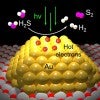
New catalyst can turn smelly hydrogen sulfide into a cash cow
Rice engineers and scientists and collaborators have discovered an efficient, one-step process for converting hydrogen sulfide gas into clean-burning hydrogen fuel.

Biden appoints Rice's Ruth López Turley to National Board for Education Sciences
President Biden has appointed Ruth López Turley, director of Rice University’s Kinder Institute for Urban Research and professor of sociology, to the National Board for Education Sciences.
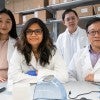
Even good gene edits can go bad
A Rice lab leads the effort to reveal threats to the efficacy of gene editing, even when it appears to be working.
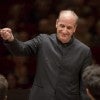
Rice Shepherd School to celebrate life and legacy of late conductor Larry Rachleff Oct. 29
Rice’s Shepherd School of Music will celebrate the life and legacy of late conductor Larry Rachleff Oct. 29 with a musical tribute from those who knew and loved him best.
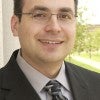
Confirming election results possible with risk-limiting audits
Risk-limiting audits that effectively verify the results of an election are underutilized in the United States.

‘No one more deserving or more prepared’: DesRoches celebrated at inaugural gala
After days of campuswide fêtes and the formal investiture of Reginald DesRoches Oct. 22, Rice’s eighth president and his family were honored at a glittering inaugural gala, where DesRoches was touted for his leadership, compassion and grand vision for the university’s future.

New study to examine effectiveness of antidepressants by analyzing brain MRIs
Antidepressants only have about a 30% rate of effectiveness, and it can take a month or longer for them to fully take effect in patients. In addition, patients often have to try several different drugs before finding one that works.

Pomp and circumstance is a key component of any presidential inauguration, and music is no small part of that.

Shepherd School fall opera, ‘Street Scene,’ set for Nov. 4 and 6
The year is 1946, and it’s an unbearably hot day on the east side of Manhattan. Drama abounds, from neighborhood gossip to romantic affairs to daily squabbles.